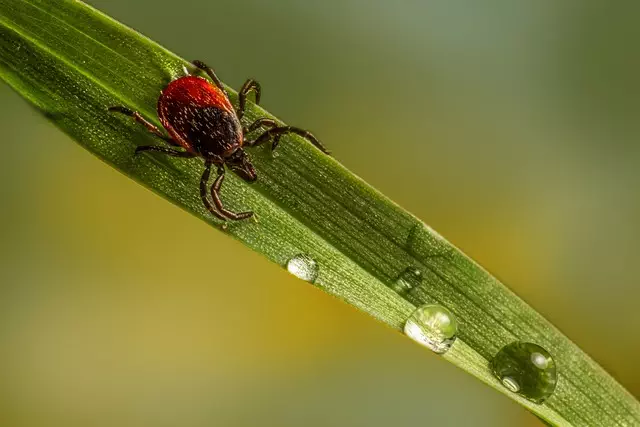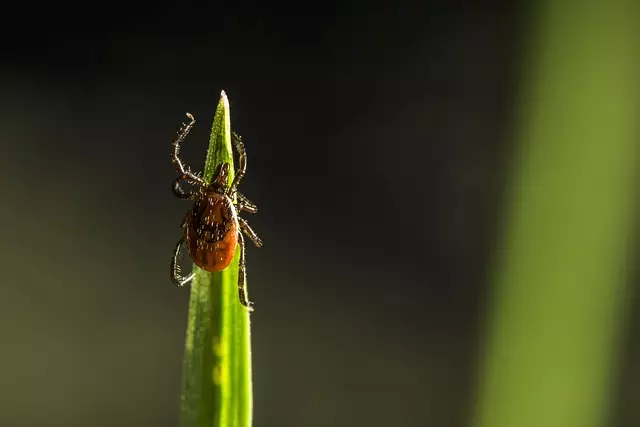Mosquitoes and ticks pose significant public health risks due to their ability to transmit diseases. Effective control requires understanding their behaviors and implementing targeted strategies like eliminating breeding sites, using repellents, installing screens, maintaining lawns, and regular tick checks. Eco-friendly alternatives, such as essential oils (citronella, lavender, peppermint) and plant-based solutions (citronella grass, lavender, marigolds, basil), offer safer methods for mosquito and tick control. Physical barriers like netting and screened porches, along with environmental management techniques, further enhance protection. Safe application strategies, including precise treatments and biological controls, minimize environmental impact. Community engagement through educational programs and collaborative efforts is crucial for successful long-term mosquito and tick control.
In the quest for effective yet non-toxic mosquito and tick control, understanding these pests’ behavior is paramount. This article guides you through a comprehensive approach, from recognizing your adversaries to sustainable practices that foster a healthier environment. We explore natural repellents, plant-based solutions, physical barriers, environmental management, targeted treatments, community engagement, and long-term prevention strategies. Embrace a holistic method to protect yourself and the ecosystem without resorting to harmful chemicals.
Understanding Mosquito and Tick Behavior: Knowing Your Pests

Mosquitoes and ticks are pests that can carry and transmit diseases, making their control a public health priority. Understanding their behavior is crucial for effective mosquito and tick control. Mosquitoes breed in stagnant water and often rest in dark, humid areas during the day, becoming active at dawn and dusk. They are attracted to carbon dioxide, body heat, and specific chemicals on our skin. Ticks, on the other hand, are primarily outdoor pests that dwell in tall grass, shrubs, and trees. They climb onto hosts, typically animals or humans, to feed on blood, often transmitting diseases in the process.
Knowing where and when these pests are most active allows for targeted control measures. This includes eliminating breeding sites by draining standing water, using mosquito repellents, installing window screens, and adopting preventive practices when spending time outdoors. For tick control, maintaining a well-mown lawn, avoiding walks through high grass or dense foliage, and regularly checking oneself and pets for ticks upon returning from outdoor activities are effective strategies.
Natural Repellents: A Non-Toxic Approach to Protection

Mosquitoes and tick control have evolved beyond chemical-laden sprays, as many are now seeking natural repellents for a safer, more eco-friendly approach to protection. Essential oils like citronella, lavender, and peppermint have been shown to effectively deter these pests due to their unique chemical compositions. These natural alternatives not only reduce exposure to harmful chemicals but also offer a more sustainable solution for both outdoor and indoor spaces.
By opting for natural repellents, individuals can enjoy peaceful, bug-free environments without compromising their health or the environment. This shift towards non-toxic mosquito and tick control is particularly beneficial for families with young children and pets, ensuring a healthier and more harmonious coexistence with nature.
Plant-Based Solutions: Cultivating a Mosquito-Free Environment

Plant-based solutions offer an eco-friendly approach to mosquito and tick control, creating a natural barrier against these pests. Certain plants contain compounds that repel mosquitoes, acting as a safe and sustainable alternative to chemical sprays. By incorporating these plant allies into your garden or outdoor space, you can significantly reduce mosquito populations.
For instance, citronella grass, lavender, marigolds, and basil are well-known for their mosquito-repelling properties. These plants release aromas that deter mosquitoes, providing a pleasant and pest-free environment. Moreover, using plant-based solutions encourages biodiversity, supporting local ecosystems and contributing to a healthier, more balanced surroundings.
Physical Barriers: Creative Ways to Keep Pests at Bay

Physical barriers offer innovative solutions for both mosquito and tick control, providing an effective yet eco-friendly approach to pest management. One creative method involves utilizing fine mesh netting or screens to cover outdoor living spaces, such as patios, decks, and gardens. These physical barriers create a safe haven where people can enjoy the outdoors without worrying about biting insects. For instance, installing screened porches allows folks to relax and socialize, enjoying the fresh air while keeping mosquitoes and ticks at bay.
Additionally, planting specific herbs and flowers known for their insect-repelling properties acts as a natural mosquito control measure. Citronella, lavender, basil, and marigolds are popular choices that can be incorporated into gardens or potted plants near entryways. These fragrant florae serve as a physical barrier, deterring mosquitoes and ticks from entering living spaces, thus promoting a more comfortable and pest-free environment.
Environmental Management: Reducing Breeding Grounds

Environmental management plays a crucial role in effective mosquito and tick control by reducing breeding grounds. One of the primary steps is to minimize standing water, as mosquitoes breed in stagnant water sources like buckets, flower pots, and abandoned tires. Regularly emptying and cleaning containers around your home can significantly decrease the population of these pests.
Additionally, maintaining a well-trimmed lawn and removing overgrown vegetation helps disrupt their breeding cycle. These measures, combined with proper waste management, create an environment less conducive to mosquito and tick reproduction, leading to a more comfortable and healthier outdoor space for residents.
Safe and Effective Treatments: Targeted Application Strategies

In the quest for effective mosquito and tick control, it’s crucial to adopt safe and targeted application strategies. Modern methods focus on precise, localized treatments rather than widespread spraying. This approach minimizes environmental impact and reduces exposure risks for humans and pets. By targeting specific areas where mosquitoes breed and rest, such as standing water and shaded zones, professionals use eco-friendly products that are designed to eliminate these pests without harming beneficial insects or the ecosystem.
Strategic application includes using advanced technologies like ultra-low volume (ULV) sprayers and targeted barriers for yard treatments. These methods ensure that chemicals, if used, are applied directly where needed, reducing drift and waste. Additionally, biological controls like bacteria (Bacillus thuringiensis) and parasites offer natural alternatives to chemical insecticides, contributing to a holistic mosquito and tick control strategy that is both safe and effective.
Community Engagement: Collaborating for Increased Control

Community engagement plays a pivotal role in effective mosquito and tick control. By fostering collaboration between residents, local authorities, and health organizations, communities can collectively address the challenges posed by these pests. Encouraging active participation through educational programs, community clean-up events, and reporting systems empowers folks to take ownership of their surroundings. This collective effort helps identify breeding grounds, reduce standing water, and promote responsible practices that deter mosquito and tick populations.
Moreover, community engagement facilitates the sharing of resources, knowledge, and best practices. Local residents can offer insights into specific areas’ unique habitats and challenges, guiding targeted interventions. Collaboration ensures a more sustainable and holistic approach to mosquito and tick control, benefiting both public health and environmental conservation efforts.
Long-Term Prevention: Sustainable Practices for a Healthier Environment

Long-term prevention of mosquito and tick control requires a shift towards sustainable practices that protect both human health and the environment. This involves embracing eco-friendly methods and creating an unwelcoming environment for these pests naturally. One effective strategy is implementing habitat manipulation techniques, such as removing standing water sources where mosquitoes breed. Regularly cleaning flowerpots, birdbaths, and other containers can significantly reduce breeding grounds. Additionally, introducing natural predators like birds, bats, and certain fish species can help control mosquito populations without harmful chemicals.
Sustainable practices also include using plant-based repellents and essential oils that deter mosquitoes and ticks. Planting specific herbs and flowers known for their insect-repelling properties in gardens and outdoor spaces can create a natural barrier against these pests. These methods not only provide long-term solutions to mosquito and tick control but also contribute to a healthier, more balanced ecosystem.
